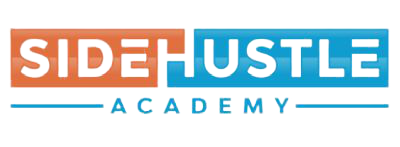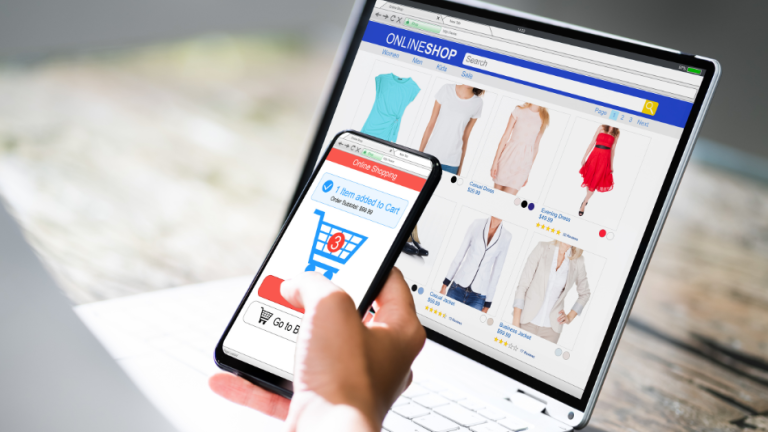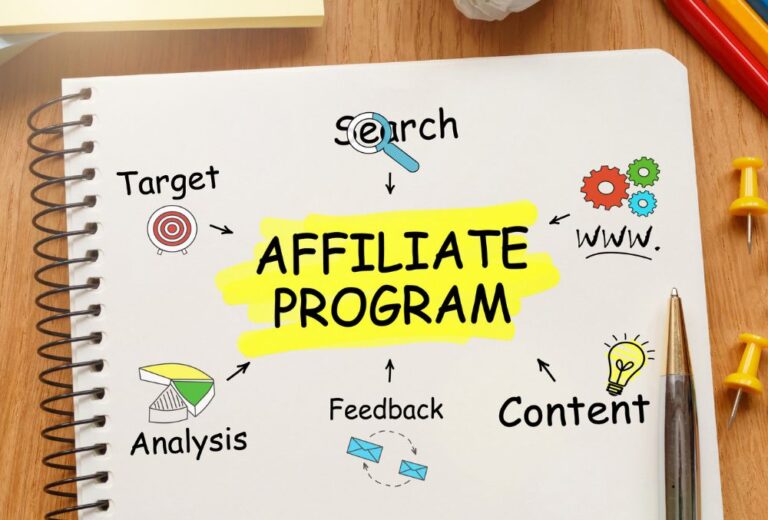How to Start Amazon Affiliate Marketing – Beginners Guide
I’ve been earning an income from the Amazon Associate Program for the last several years, and it is probably one of the easiest affiliate programs to join and make money with. With so many people buying on Amazon, it’s a great way to get started online, but how do you do it?
To get started on Amazon Associates, you will need a website or a YouTube Channel with valuable content on it. Then sign up for Amazon Associates, add your websites, and tax info. From here, you can start adding affiliate links, and when people click on them and buy something, you will earn a commission.
That’s the magic of Amazon affiliate marketing, and honestly, it’s one of the most beginner-friendly ways to start earning passive income online. I’ve been there—staring at my laptop screen, wondering if this whole affiliate thing actually works. Spoiler alert: it absolutely does, but only if you know what you’re doing.
Don’t worry, though. I’ll walk you through every step, from setting up your first affiliate account to earning your first commission check. By the end of this guide, you’ll have a clear roadmap to start your Amazon affiliate marketing journey.
What Exactly Is Amazon Affiliate Marketing?
Let me break this down in plain English. Amazon affiliate marketing is basically recommending products to people and earning a commission when they buy through your special link. Think of yourself as a digital matchmaker—connecting shoppers with products they’ll love.
The Amazon Associates Program is Amazon’s official affiliate network. When someone clicks your affiliate link and makes a purchase within 24 hours, you earn a percentage of that sale. The commission rates vary by category, ranging from 1% to 10%, but here’s the kicker—you earn commissions on everything they buy during that session, not just the product you recommended.
I love this business model because it’s genuinely win-win-win. Customers discover great products, Amazon makes sales, and you earn money for being helpful. It’s not about being pushy or salesy—it’s about providing value and building trust.
Step 1: Build Your Content Platform
Before you can join the Amazon Associates Program, you need a platform where you’ll share your affiliate links. Amazon wants to see that you have a genuine audience and create quality content. Here are your best options:
Website or Blog
This is the gold standard for affiliate marketing. You have complete control over your content, and search engines love helpful product reviews and comparison articles. If you’re starting from scratch, platforms like WordPress, Wix, or Squarespace make it easy to get up and running.
Resources: Hostinger is the hosting platform I use and recommend. You can sign up for Hostinger by clicking here and get up to 75% off your hosting. (I am an affiliate of Hostinger)
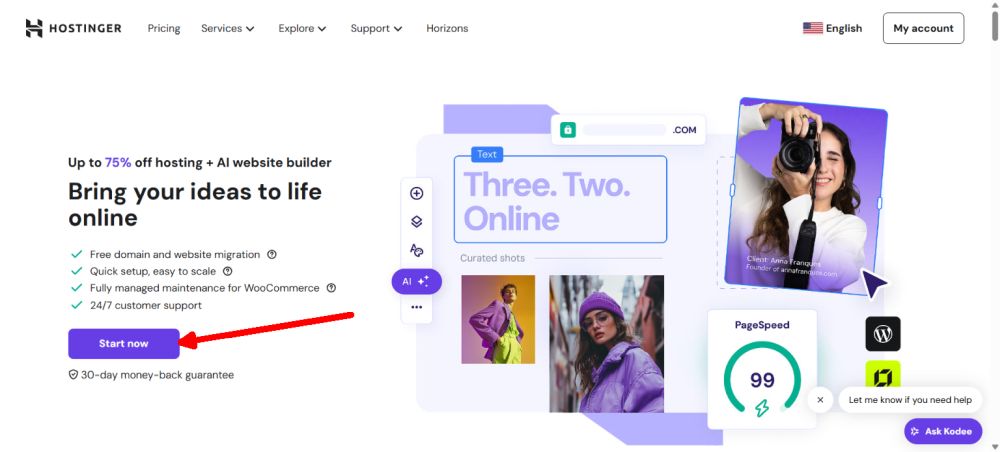
Side Note: With Hostinger you want to sign up with the business plan. This plan comes with a special Amazon affiliate WordPress plugin that you can only get with this hosting plan.
I recommend choosing a niche you’re genuinely interested in—whether that’s tech gadgets, home decor, fitness equipment, or cooking tools. Your passion will show through your content, and that authenticity is what converts browsers into buyers.
YouTube Channel
Video content is incredibly powerful for affiliate marketing. People love seeing products in action before they buy. You could create unboxing videos, product demonstrations, or “day in my life” content featuring your favorite Amazon finds.
Social Media Presence
Instagram, TikTok, and Pinterest can work for affiliate marketing, but you’ll need a decent following and consistent engagement. The key is creating content that doesn’t feel like one giant advertisement.
Pro Tip: Whatever platform you choose, start creating valuable content immediately. Don’t wait until you’re “perfect”—consistency beats perfection every time.
Step 2: Join the Amazon Associates Program
Ready to make it official? Here’s how to sign up for the Amazon affiliate program:
Meeting the Basic Requirements
- You must be at least 18 years old
- Have a functioning website, blog, app, or social media presence
- Comply with Amazon’s Operating Agreement and guidelines
- Be able to receive payments (US bank account or international payment methods)
The Application Process
Visit the Amazon Associates homepage and click “Sign Up”.
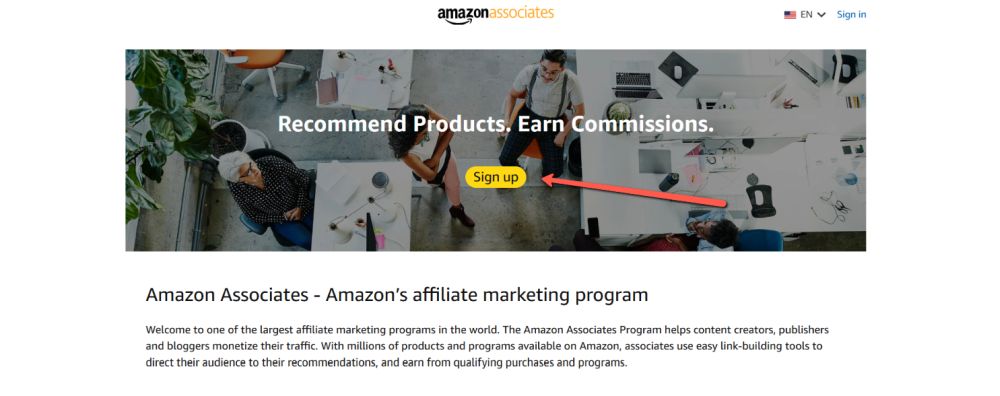
Sign in to your existing Amazon account or create a new one.

Fill out your profile including your preferred topics and how you drive traffic
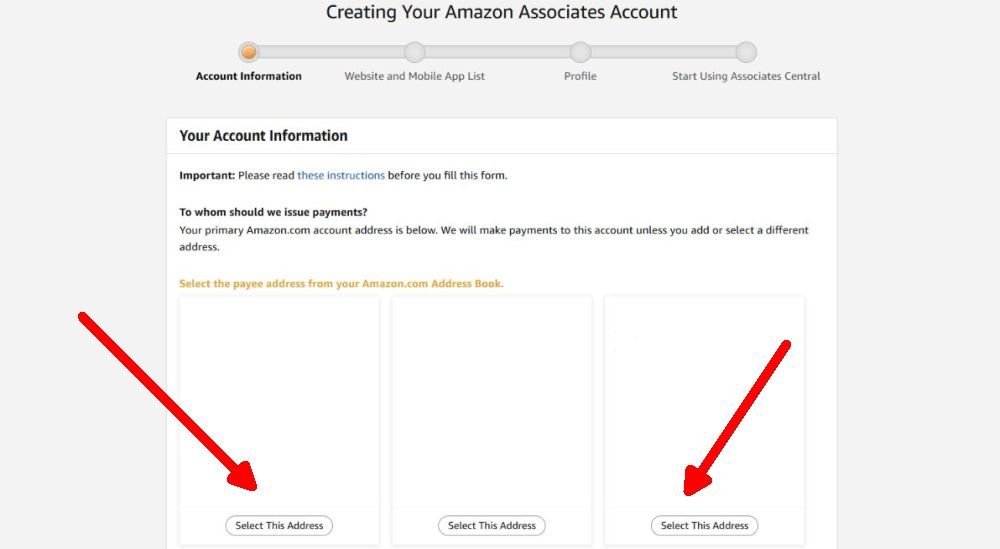
Add your website/social media URLs where you plan to promote products
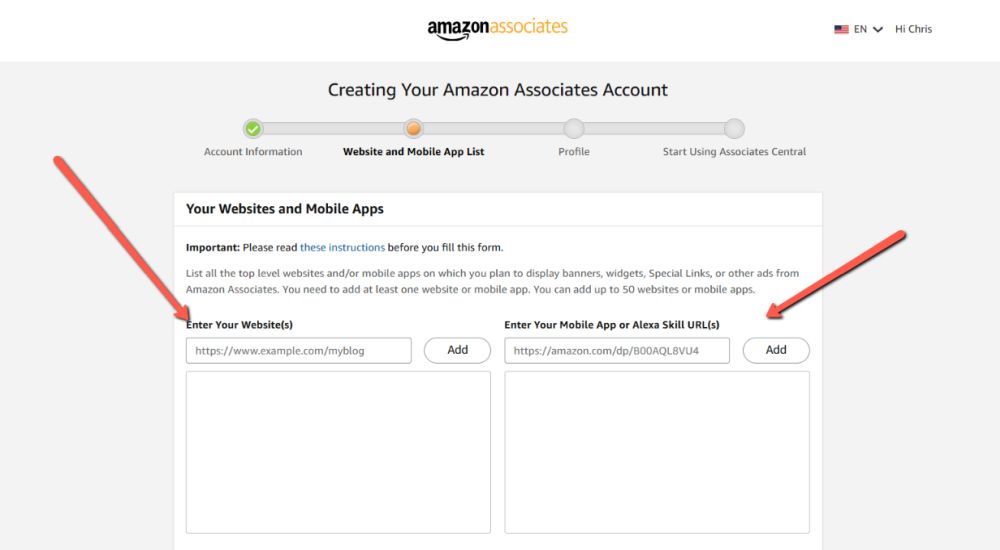
Choose your payment method (direct deposit, check, or Amazon gift cards)
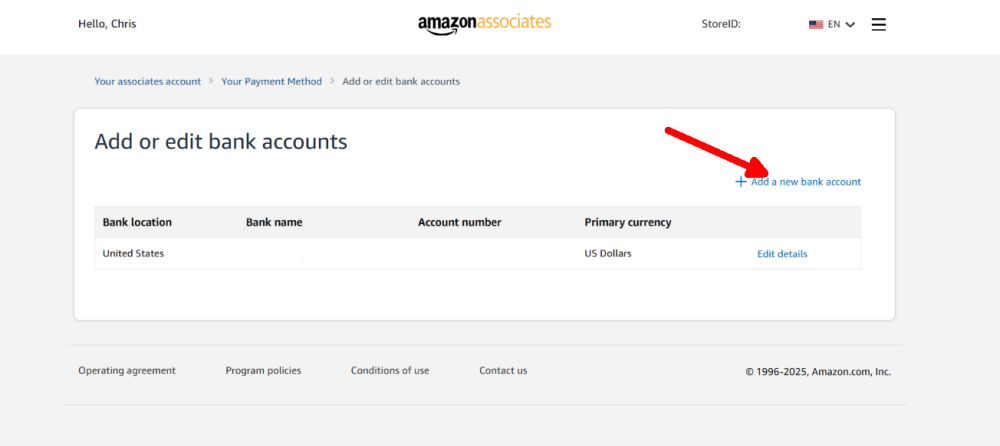
Complete tax information for US residents. You will need this to get paid.

Getting Approved
Here’s where many beginners hit a roadblock. Amazon has tightened its approval process, prioritizing quality over quantity. Your platform should have:
- Original, helpful content that provides value to visitors
- Professional appearance with clear navigation and contact information
- Regular updates showing you’re actively maintaining your platform
- Legal pages like a privacy policy and terms of service
Amazon provides new affiliates with a 180-day window to make at least three qualifying sales. If you don’t hit this target, they’ll close your account, but don’t panic—you can always reapply.
Step 3: Navigate Your Associates Dashboard
Once approved, you’ll get access to Associates Central—your command center for all things affiliate marketing. Let me show you around the key features:
Product Links Tool
This is where you’ll create most of your affiliate links. You can search for specific products, browse categories, or even import links from your browsing history. The tool generates clean, trackable links that you can customize.
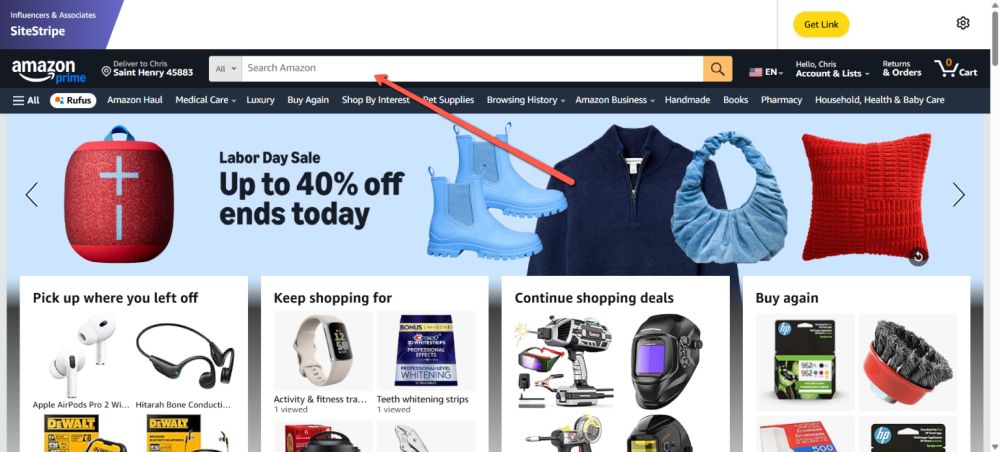
SiteStripe
When you’re logged into your Associates account and browsing Amazon, you’ll see a toolbar at the top of every product page. This lets you instantly generate affiliate links without leaving the product page—super convenient for quick recommendations.
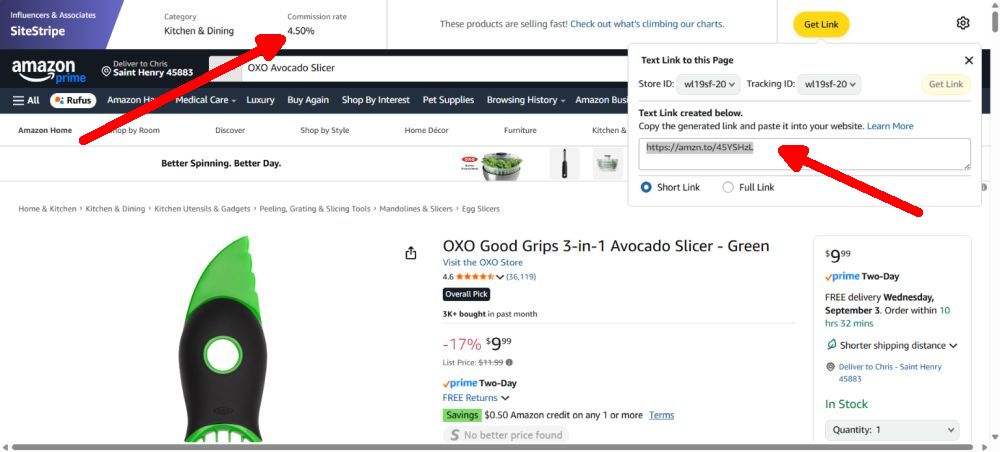
Reports and Analytics
Your dashboard shows detailed performance metrics, including clicks, conversions, earnings, and which products are performing best. I check these reports weekly to identify trends and optimize my strategy.
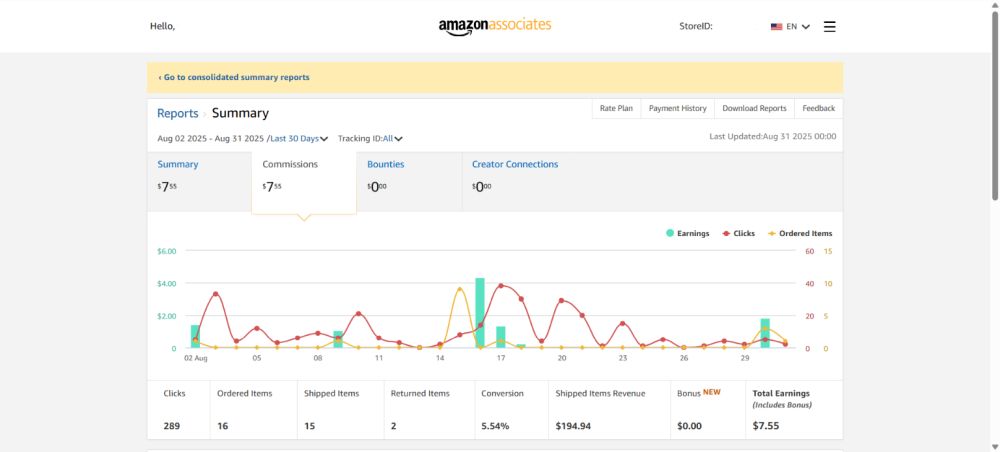
Amazon API
Amazon provides an API that allows you to connect special tools like the Hostiger Amazon Product Link tool. The only way to get this tool is to have the Hostinger Business Plan.
Below is a product I added to my welding niche site.
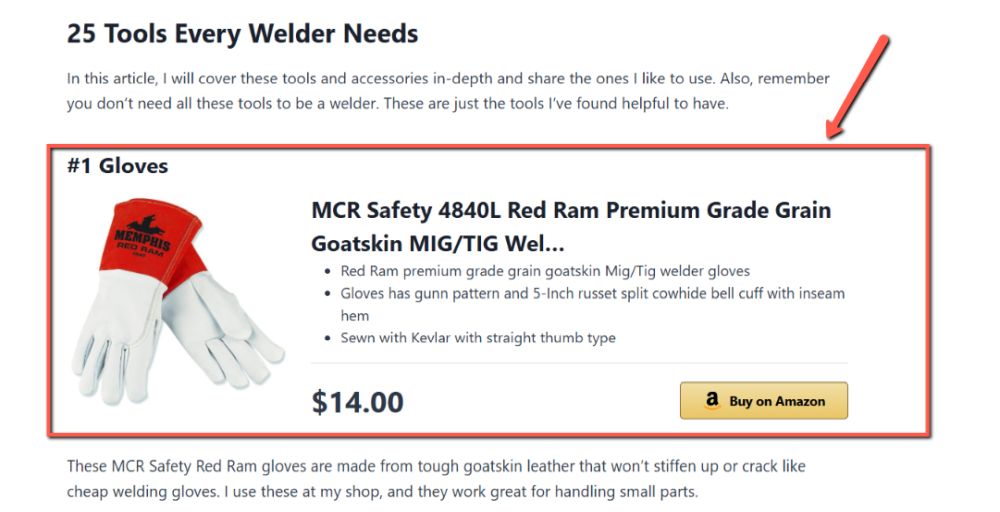
To use this tool, simply add the plugin to your blog when you become a Hostinger subscriber, and you can add niche product clips just like this on your blog.
To learn more about this tool, check out this article.
Step 4: Choose Profitable Products to Promote
Not all Amazon products are created equal when it comes to affiliate potential. Here’s how to identify winners:
High-Demand Categories
Based on 2025 trends, these categories consistently perform well for affiliates:
- Electronics and Gadgets: Smart home devices, headphones, streaming devices
- Home and Kitchen: Air fryers, coffee makers, organization tools
- Health and Personal Care: Fitness trackers, skincare products, supplements
- Books and Education: Kindle devices, educational toys, self-help books
- Outdoor and Sports: Fitness equipment, camping gear, athleisure
Product Research Strategy
I use several criteria when choosing products to promote:
- Price Point: Products between $25-$200 often have the best conversion rates
- Reviews: Look for items with 4+ stars and hundreds of reviews
- Best Seller Status: Amazon’s “Best Seller” badges indicate high demand
- Seasonal Trends: Capitalize on holiday shopping, back-to-school, and summer activities
- Problem-Solving: Products that solve specific problems tend to convert well
Top-Converting Product Examples
Here are some consistently high-performing products across different categories:
| Product Category | Example Product | Why It Works |
|---|---|---|
| Tech Accessories | Apple AirPods Pro | High demand, frequent repurchases |
| Home Essentials | Instant Pot Duo | Solves cooking problems, gift-worthy |
| Personal Care | Crest Whitestrips | Before/after appeal, consumable |
| Fitness | Fitbit Charge 6 | Health consciousness trend |
| Kitchen Tools | OXO Avocado Slicer | Viral appeal, impulse buy price |
*The links in this chart are Amazon affiliate links, and I will earn a commission if you click the link and buy.
Step 5: Create Compelling Content
This is where the magic happens. Your content is what transforms casual browsers into buyers. Here are the content types that work best for Amazon affiliate marketing:
Product Reviews
In-depth, honest reviews are the bread and butter of affiliate marketing. Don’t just list features—explain how the product fits into someone’s life. I always include pros, cons, and who the product is perfect for.
Example Structure:
- Hook with a personal story or a surprising fact
- Overview of what the product does
- Detailed testing or usage experience
- Comparison with similar products
- Clear recommendation with affiliate link
Comparison Articles
“Best [Product Category] of 2025” articles perform incredibly well because they help overwhelmed shoppers make decisions. Create comparison tables, highlight key differences, and recommend the best option for different needs and budgets.
Gift Guides
Seasonal gift guides are affiliate marketing gold mines. “25 Perfect Gifts for Coffee Lovers Under $50” or “Tech Gifts That’ll Make You the Favorite Aunt” tap into that gift-giving anxiety we all feel.
Problem-Solution Content
Identify common problems your audience faces, then recommend products that solve them. “Struggling with Back Pain While Working from Home? These 5 Amazon Products Changed My Life” addresses a real pain point.
Video Content
If you’re comfortable on camera, product demonstrations and unboxing videos can significantly boost conversions. People want to see products in action before buying.
Step 6: Master Affiliate Link Strategy
How and where you place your affiliate links can make or break your earnings. Here’s what I’ve learned through years of testing:
Natural Integration
Don’t just dump links randomly throughout your content. Instead, weave them naturally into your storytelling. “I’ve been using this Stanley tumbler (affiliate link) for six months, and it’s still keeping my coffee hot after four hours.”
Strategic Placement
- Within the first 300 words for readers who don’t scroll far
- After detailed product explanations, when interest is highest
- In the conclusion section, as a clear call-to-action
- Within comparison tables for easy clicking
Call-to-Action Optimization
Generic “click here” links are dead. Instead, use compelling CTAs like:
- “Grab yours on Amazon while it’s still in stock.”
- “Check current price and reviews”
- “See why thousands of customers love this product.”
Mobile Optimization
Over 60% of Amazon traffic comes from mobile devices. Make sure your affiliate links are easily clickable on smartphones and tablets.
Step 7: Understand Amazon’s Commission Structure
Let’s talk money—because that’s why we’re all here, right? Amazon’s commission rates vary significantly by product category:
Commission Rates by Category
- Luxury Beauty, Amazon Coins: 10%
- Digital Music, Physical Music: 5%
- Handmade, Digital Video Games: 4.5%
- Amazon Fire Tablets, Kindle E-readers: 4%
- Home, Garden, Pets Products: 3%
- Headphones, Beauty, Musical Instruments: 2%
- Outdoors, Tools, Home Improvement: 1.5%
- Everything Else: 1%
Earning Potential Reality Check
Most beginners ask, “How much can I realistically earn?” The honest answer is that it varies wildly. I’ve seen people earn $50 their first month and others hit $5,000 within six months.
Your earnings depend on:
- Traffic volume to your content
- Audience engagement and trust
- Product selection and pricing
- Conversion optimization skills
- Consistency in content creation
Payment Schedule
Amazon pays affiliates approximately 60 days after the end of the month in which commissions were earned. You can choose direct deposit (minimum $10), check ($100 minimum), or Amazon gift cards ($10 minimum).
Step 8: Avoid Common Beginner Mistakes
I wish someone had warned me about these pitfalls when I started:
Disclosure Violations
You must disclose your affiliate relationships clearly and conspicuously. A simple “This post contains affiliate links” at the beginning of your content isn’t just ethical—it’s legally required by the FTC.
Link Cloaking Issues
Amazon doesn’t allow you to hide or redirect affiliate links through URL shorteners or cloaking services. Always use direct Amazon affiliate links.
Geographic Restrictions
Amazon affiliate links only work for the specific Amazon marketplace where you’re registered. If you’re registered with Amazon.com but share your links with UK audiences, you won’t earn commissions from Amazon.co.uk sales.
Content Quality Shortcuts
Avoid thin, promotional content that reads like a sales pitch. Amazon and search engines favor helpful, informative content that genuinely serves readers.
Putting All Eggs in One Basket
Don’t rely solely on Amazon affiliates for income. Diversify with other affiliate programs, digital products, or services to build a more stable business.
Step 9: Scale Your Amazon Affiliate Business
Once you’ve got the basics down and you’re earning consistent commissions, it’s time to think bigger:
Content Multiplication
Identify your best-performing content and create variations. If a “Best Coffee Makers” article is doing well, create separate articles for “Best Budget Coffee Makers” and “Best Coffee Makers for Small Kitchens.”
Email List Building
Start capturing email addresses from your website visitors. Email marketing allows you to promote new products directly to interested buyers, often with higher conversion rates than blog traffic.
Social Media Expansion
Repurpose your content across multiple platforms. Turn blog posts into Instagram carousels, YouTube videos into TikTok clips, and product reviews into Pinterest pins.
Team Building
As you grow, consider outsourcing content creation, social media management, or website maintenance. This frees you to focus on strategy and high-level growth activities.
Advanced SEO Strategies
Invest time in learning search engine optimization to drive organic traffic to your content. Higher search rankings mean more potential customers discovering your affiliate recommendations.
Legal and Ethical Considerations
Playing by the rules isn’t just about avoiding trouble—it builds long-term trust with your audience:
FTC Disclosure Requirements
Your affiliate disclosures must be:
- Clear and prominent (not buried in fine print)
- Easy to understand (avoid legal jargon)
- Close to affiliate links (not just on a separate disclosure page)
- Accessible on all devices (mobile-friendly)
Amazon’s Operating Agreement
Read and understand Amazon’s terms of service. Key points include:
- No misleading product claims
- No trademark violations
- No inappropriate use of Amazon’s intellectual property
- No offline promotion of affiliate links
Building Authentic Trust
The most successful affiliate marketers are those who genuinely help their audience. Only recommend products you’d personally use or gift to a friend. Your reputation is your most valuable asset.
Final Thoughts: Your Amazon Affiliate Journey Starts Now
Amazon affiliate marketing isn’t a get-rich-quick scheme, but it’s one of the most accessible ways to start earning passive income online. The key is treating it like a real business—focus on serving your audience, creating valuable content, and building genuine relationships.
Start small, stay consistent, and be patient with the process. Your first commission might take a few weeks or months, but once you understand what works for your audience, growth can accelerate quickly.
Remember, every successful affiliate marketer started exactly where you are right now—with zero followers, zero experience, and a lot of questions. The difference between those who succeed and those who quit is simple: the successful ones start before they feel ready and keep going when things get challenging.
Your Amazon affiliate marketing journey begins with a single step. Choose your platform, create your first piece of content, and submit that application. Six months from now, you’ll be grateful you started today.
Ready to turn your product recommendations into profit? The Amazon Associates Program is waiting for you—and so are those commission notifications that’ll make your morning coffee taste even sweeter.
Ready to get started? Head over to the Amazon Associates homepage and begin your application today. Your affiliate marketing success story starts now.
